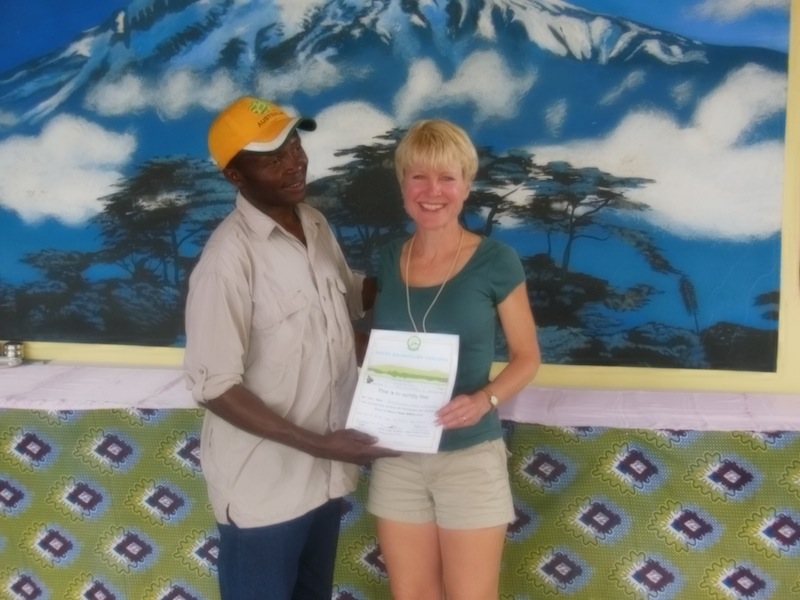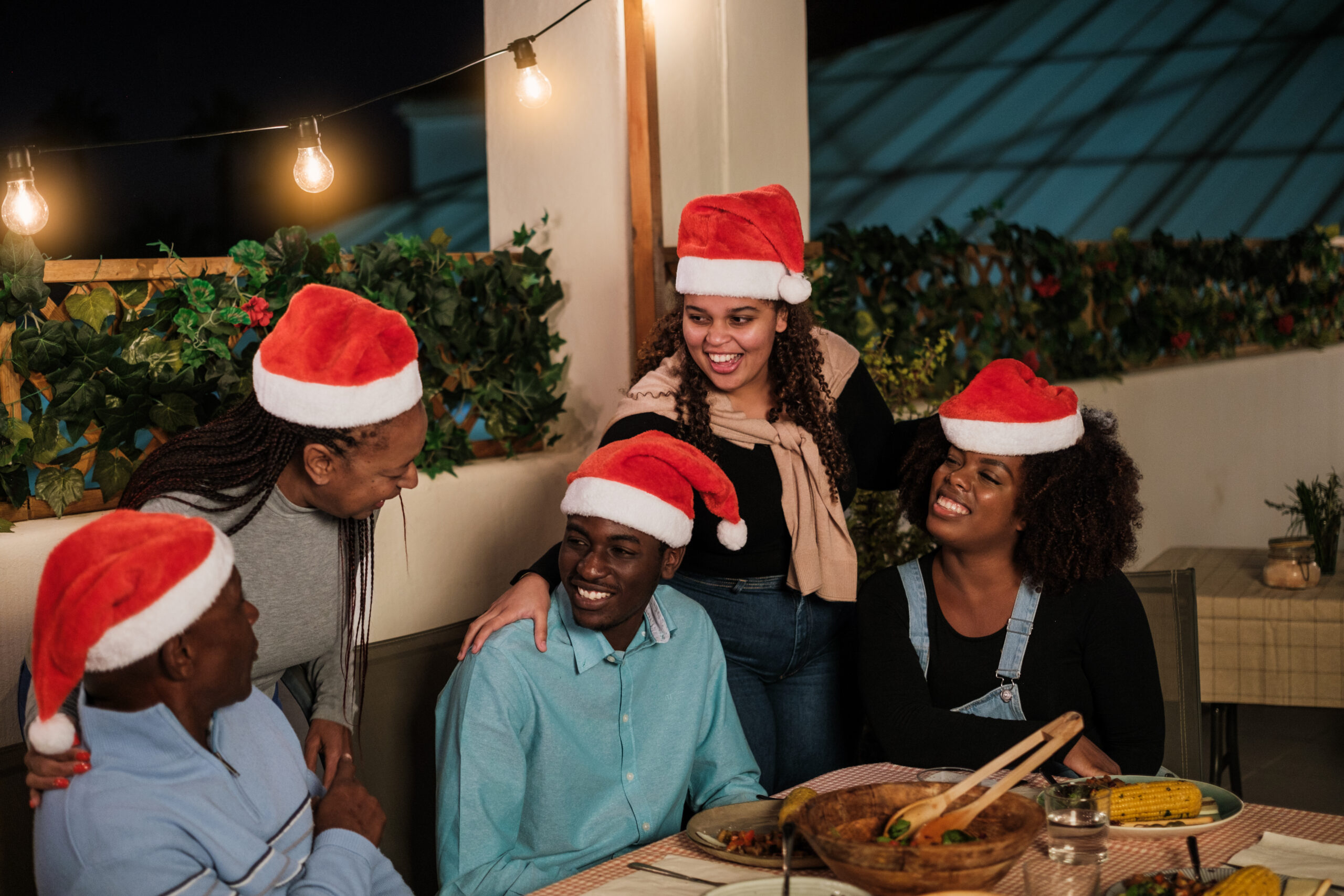CHESTERMERE – What started out as an African Safari in Tanzania became a life changing event for Bev LaPeare and her good friend Deb Baigent. LaPeare and Baigent are avid athletes and one of the activities they love to do is hiking. Digging into their bucket list one day they discovered that they both have always wanted to go on a safari in Africa. So now the planning starts and as they began their research, they would come across a little hill they thought would add to their adventure. The little hill they spoke of was Mount Kilimanjaro; the highest mountain in Africa at 5,895 metres or 19,341 feet above sea level. It is unknown where the name Kilimanjaro originated but European explorers reported that it was Swahili for “hill, little mountain”. Lapeare said “We signed up for it thinking this is going to be a breeze and OMG, it was not a breeze”. “It was absolutely not what I expected but it was so much more than what I ever expected”. “It was incredible, so humbling and it’s changed me; being in Africa all together has changed me”. “The people there are all about what can I do to help the people around me”.
When the pair started off they were each assigned a guide (porter). The porters carry the bulk of the pack, some 26 pounds worth of essentials. LaPeare didn’t find out until later why each person had their own guide and later found out that it’s because a lot of people who start out thinking they can make it to the summit, but due to sickness or something else, may have to turn around and go back down the mountain with their assigned guide. This allows others in their hiking party to carry on with their own guides and reach the summit of the mountain. On average there are 10 deaths on the mountain and 1000 people who need to be evacuated each and every year. There is another person on each of the trips who is called a waiter. His duties are to bring and cook food for the climbing party at the camp. One of the pleasures LaPeare and Baigent enjoyed the most was a small dish of warm water brought to them each day, “It was heaven” said LaPeare. “It was only a 9 inch bowl of water but it might as well have been a luxurious Jacuzzi bubble bath”. This was obviously no princess trip with showers and luxury items they had first thought it was going to be. The “huts” were nothing more than a little shack made of wood; a partial wind break and nothing more.
They started off their excursion walking through the rain forest and “it was stunningly beautiful and beyond my imagination” said Lapeare. They would go through 5 different eco zones during the climb before you end up at the ice cap. She continued “We took Diamox which is an altitude sickness pill which is supposed to help your body adjust to the altitude”. “We thought we took all the right stuff to prepare for the altitude but the side effect of the Diamox is that it’s a diuretic and that means you have to pee ……..a lot”. Their first day trekking through the rain forest was fairly easy slow pace and they made it to the first hut. LaPeare describes the huts “The Hut; there is nothing in these huts, nothing”. They were served tea and popcorn each day at the end of the hike and it may as well have been a steak. They noticed the brightness of the stars; it was pitch black and when you look up it was like being in a movie; there were no clouds and the stars were crystal clear. Because it was an absolutely clear night there was no insulation from the cold either. Clear sky … it was cold. The first night they thought they would sleep in their clothes and it would be fine…..no, they froze, and it got worse from there.
Morning came and they ate breakfast. On the menu – Porridge, mango and what they call sausage, which was really just wieners, toast and coffee – it was special. The porters, Charles and Robinson, set the pace for the gals and at first they went very slowly. They go slow so your body can adjust to the altitude. LaPeare says “The Africans call it poli poli; you always hear them say poli poli, poli poli”.
At the second hut (Haraba Hut) we felt good but LaPeare and Baigent started to see others being brought down. “It was scary because my heart was set on reaching the top”. “One girl was coming down because of her asthma…. I’ve have severe asthma as well” said Lapeare “so that was a little disheartening”. But she is really really determined.
It gets dark quite early in Tanzania… about 6:30 so it starts to get cold as soon as the sun goes down. She wasn’t expecting that she said. It was still the second night when others were beginning to feel the effects of altitude sickness, headaches, nausea, etc. “I wasn’t yet so I was feeling “Yahoo I can do this!”. “My friend had a slight headache but really it was nothing”.
The third day was an acclimatization day; this is where you climb up but just when you get to the next hut, you turn around and come back down. “Climb high, sleep low” says LePeare.
The next day they went to Kibo Hut which is the base camp. “As we were having breakfast” Lapeare says “we saw some of the Kilimanjaro ambulances which are like a wheel barrow stretcher of sorts”. “The porters literally run down the hill because they have to get these people down to a safe altitude or they will die”. The guide says they usually get down without spinal injury. Really??
They were cold and it was extremely windy at Kibo Hut and to top it off they had no energy. The pair felt terrible; they had their tea and popcorn, but it was hard keeping food down. They knew they needed the food for the climb the next day. They didn’t sleep that night at all because they were so sick and they couldn’t close their eyes as the room kept on spinning.
In the late evening the other people sharing the hut started getting up to start their climb at night. Lapeare and Baigent were made to get up at midnight so they could start their climb at 1:00 AM. No sleep, no food, nothing but vomiting all night. No sense of time, no sense of where they were as it was pitch black and freezing cold outside. They started the climb and along the way they rested for just a moment before carrying on. LaPeare rested her head on her ski pole and it gave as much relief as a soft pillow.
They were a mere ¼ of the way to the summit and it was at this point when her partner succumbed to the altitude sickness. Charles, Baigent’s guide, decided she needed to go back down the mountain in order to survive.
As difficult as it was to make the decision, LaPeare thought she would carry on and try to make it to the summit; she was really determined to make it.
LaPeare and her guide continued up the mountain and with every step LaPeare’s legs were feeling like lead, the ground felt like it was glued to your shoes. She couldn’t eat to maintain her strength – could she make it or should she turn around? This thought entered her mind time and time again but was quickly brushed off. At some point she reached into her jacket pocket and found 3 little mint candies and she promptly popped one in her mouth. Those 3 mints seemed to give her some energy and took her mind off the sickness she was feeling for the rest of the trip.
Reaching the summit
The sun was now coming up and Robinson, the guide, stops and points to a sign at the summit off in the distance. LaPeare focusses on it for the rest of the hike. Finally like the light at the end of the tunnel she makes it to Uhuru peak, the rim of the crater. It was -23 C but perhaps -30 C with the wind chill. LaPeare’s sickness was getting worse and she was starting to hallucinate. The guide managed to take a picture of her and it was at that point she knew she had accomplished something huge.
“Hallucinating is not fun” says LaPeare, and the pair head off down the mountain. The pace quickens; by the time they reach a safe altitude, they will have hiked for 16 hours. “Once you are down to an lower altitude your sickness just goes away and you feel fine” said LaPeare.
Once down LaPeare is reacquainted with her friend. Baigent was worried sick about her friend and had seen other climbers who told Baigent how sick LaPeare was but still on her way to the summit. Fortunately for them both the climb ended well.
LaPeare is so grateful her guide Robinson who climbs Mount Kilimanjaro about twice a month. She said “They put their lives in the hands of Charles and Robinson and if they weren’t there, we would have died”. “The guides are all underpaid and underfed”. “We didn’t know this at the time but they ate our leftovers”. She adds “It’s hard for them to keep weight on; they are so thankful to have a job – they are so happy”.
LaPeare and Baigent have a few items they have new respect for: they will never take Kleenex or toilet paper for granted again; they won’t miss the rustle of the sleeping bag, sharing the room with strangers, purifying water or the stench of unwashed bodies. Hallucinations are a scary thing and they will not ever eat mango again.
They met people from all over the world and a person from Airdrie who happened to know a person LaPeare knows. LaPeare says “The kindness of strangers is overwhelming”. “This was the most incredible experience of my life”. “The African people always had a warm smile and genuine concern for you”.
They eventually went on their safari and to a school in Masai village.
So what’s next – “perhaps Machu Picchu” LaPeare says “and perhaps in a couple of years we’ll go back and take the more gradual camping route to the Rim”.
Bev LaPeare, Trustee for Ward 2, is serving her third term as trustee for Rocky View Schools. Ward 2 represents schools in Chestermere, Langdon, and Indus areas. LaPeare is currently serving as the Vice Chair of the Board of Trustees. In LaPeare’s spare time she is an avid athlete. She begins each morning with a 10 kilometre run and also enjoys English horse riding and jumping, downhill skiing, and of course hiking.








